He is reported Missing in Action. Did he just vanished by a grenade, or is he still buried by the dirt from the very intense grenade barrage from the enemy? No one knows. But we know that he is commemorated at the Vimy Memorial, raised to remember those Canadian Forces who fought here in the battle for Vimy Ridge and Hill 145, within the battle of Arras.
Vimy Memorial is the place where those who are presumed to have died and doesn´t have their own grave are remembered. They will be remembered, I will remember them, and I will especially remember Gunnar Jonas Backlund, the Swede who still is Missing in Action here, since April 9th, 1917.
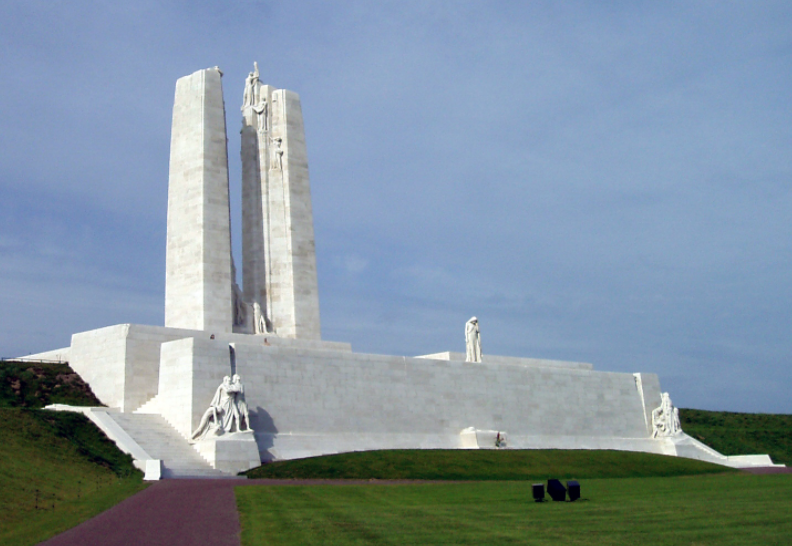
Gunnar was not the only Swede who gave his life this day, the start of the battle of Vimy Ridge, and also the start of Battle of Arras in 1917. There are others, and I will now tell you the story of four of those who fought here these first days of the battle, and I will start with Gunnar Jonas Backlund, the Swede from the northern part of Sweden, who left Sweden for new adventures together with his family.
Gunnar Jonas Backlund was born December 10th 1889 and raised in the town of Umeå, around 600 km north of Stockholm, in a small part of Umeå, called Öhn, or Ön as it is called today.
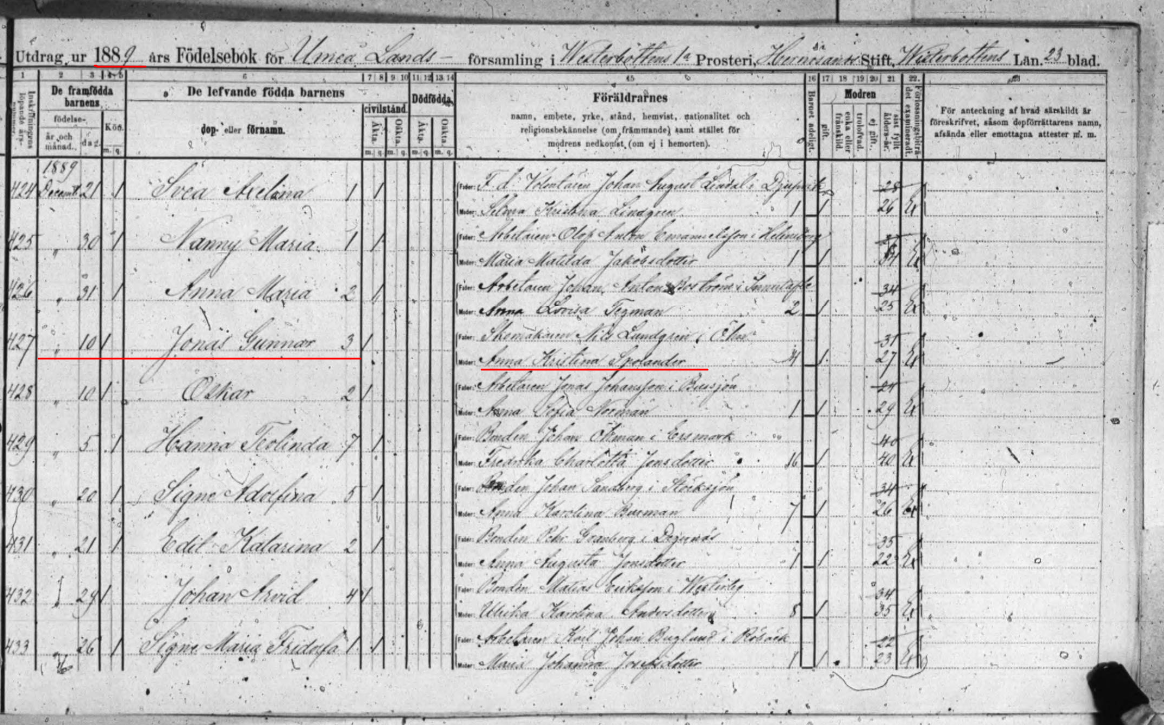
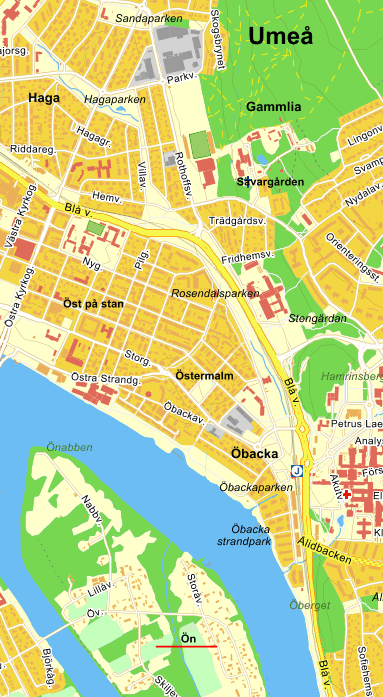
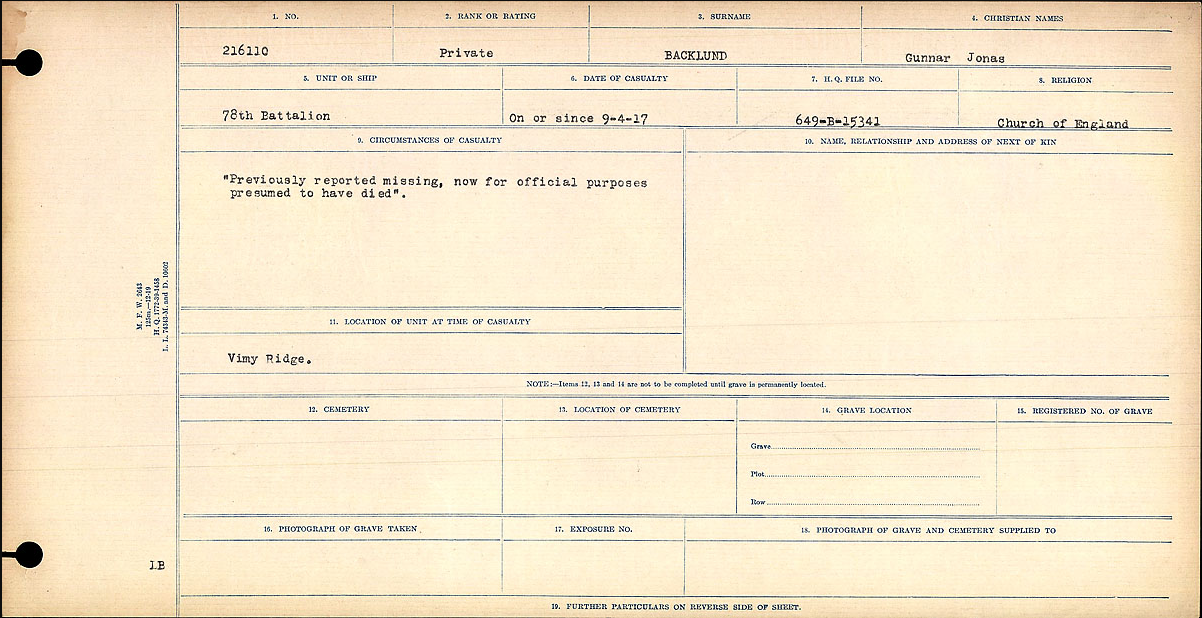
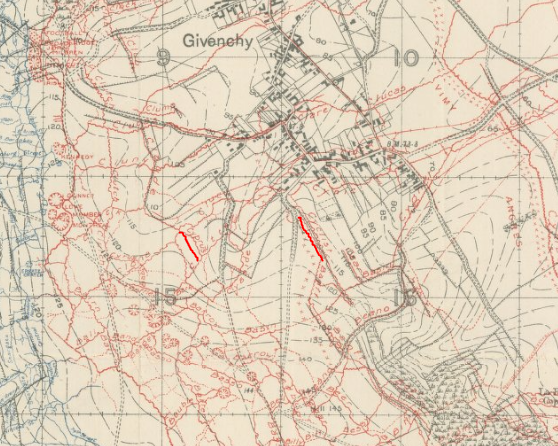


His parents were Anna Kristina Spolander and the shoemaker Nils Jonsson Lundgren. We do not know what it was that made them leave this town in Sweden, and head for the large continent in the West. According to the church book the whole family left Sweden in 1893, when Nils is only around 4 years old. They first went to North America but according the papers they settled down in Winnipeg, Canada, in 1895, after have been living in Minnedosa, Canada. The Lutheran church book in Winnipeg do not mention father Nils, and there is no note in the book of what have happened to him.
Gunnar is registered for the Canadian Army in January 1916 and is the attached to the 100th battalion. He left Halifax with S.S Olympic in September 18th, 1916 and arrived England seven days later. The sea were probably a bit rough as it use to be in the autumn.
In December 12th he is transferred to 78th Battalion, 12th Brigade, 4th Canadian Division, in the field and it is in this battalion he fought this special day in April 9th, 1917. The casualty card states that he reported missing in action the same day, and in April 21st he is reported premsumed to have died in April 9th 1917, age 27.
Some notes from the diary of 78th battalion in April 9th 1917:
Sir,
I have the honour to report on the operations of my Battalion in the engagement on the VIMY RIDGE as follows:
STRENGTH.
The Battalion went into the engagement with an approximate strength of 28 Officers and 774 0.R’s.
19 officers of only went into action, at first the balance of officers (9) were employed at Battalion Headquarters, as the engagement proceeded it was found necessary to send forward other officers owing to heavy casualties, I therefore sent forward five more which made a total of 24 in action, exclusive of Battalion Headquarters.
The Battalion emerged from the tunnel and dugouts in good order and was formed up in the jumping off trenches in good time. Immediately the mine on our left was sprung and before our artillery opened up the Battalion moved forward and was practically up to our front line before the barrage was laid down …
… At about 8.30 a.m on the morning of the 9th the enemy about 200 strong came across the ridge in front of CYCLIST trench on a frontage of about 250 yards and moved forward about half-way down the ridge staying in shell holes. Our Lewis Gun fire stopped the enemy at that point and no further advance was made on their part. At this time on our right a number of men (unit unknown) were surrounded by the enemy and captured …
… About 7.46 p.m Lt. Scott reported that he was holding forward position leading up to CYCLIST trench but owing to enfilade machine gun fire could not move during daylight. After dusk he retired and formed a strong point at about S.15.B.40.50 which was maintained until the morning of the 12th.
These are just a few sentences from the diary, and we do not know when Gunnar might have dissapeared, and maybe he is still in the area waiting for to be discovered.
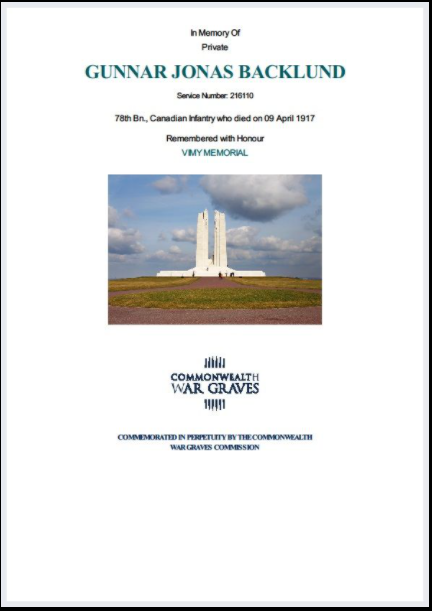
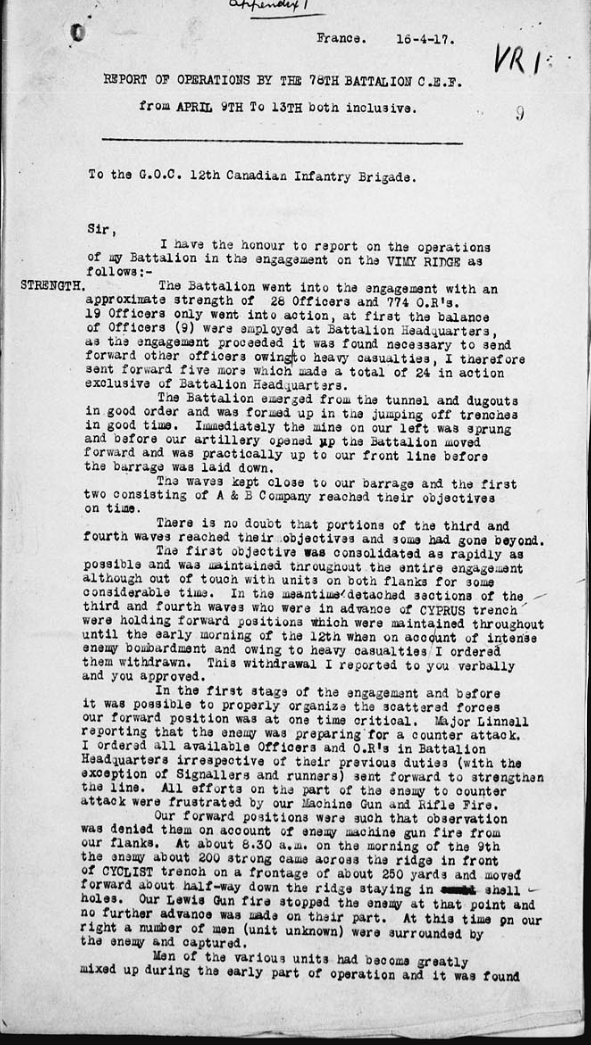

During that same day another two Swedes fought for the 4th Canadian Division. The first one of these that we will take a closer look at is Eric Ahlman, born in Sweden as Carl Erik Axel Ahrrman. Eric is born November 14th 1882 in, at that time, quite remote area far up in Sweden, in Kvikkjokk, in a very small place called Peuraure. He is raised in this remote farm area by his parents Maria Larsdotter and Anders Amund Ahrrman. According to the archive his father rented an area and it is probable that they maybe had reindeers as live stock, which is common still today in that area.
Eric made his conscript in the large garrison town Boden, and maybe it was there he was informed about North America? His Conscript card is not scanned into the archive so I dont have any more information about his time in Boden.
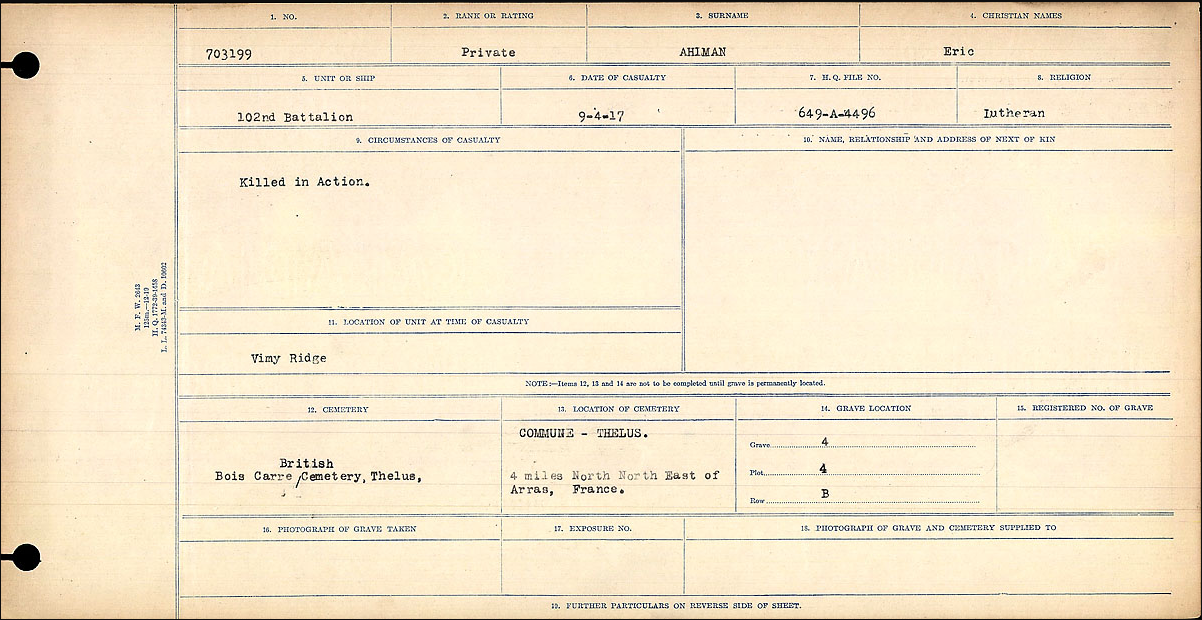
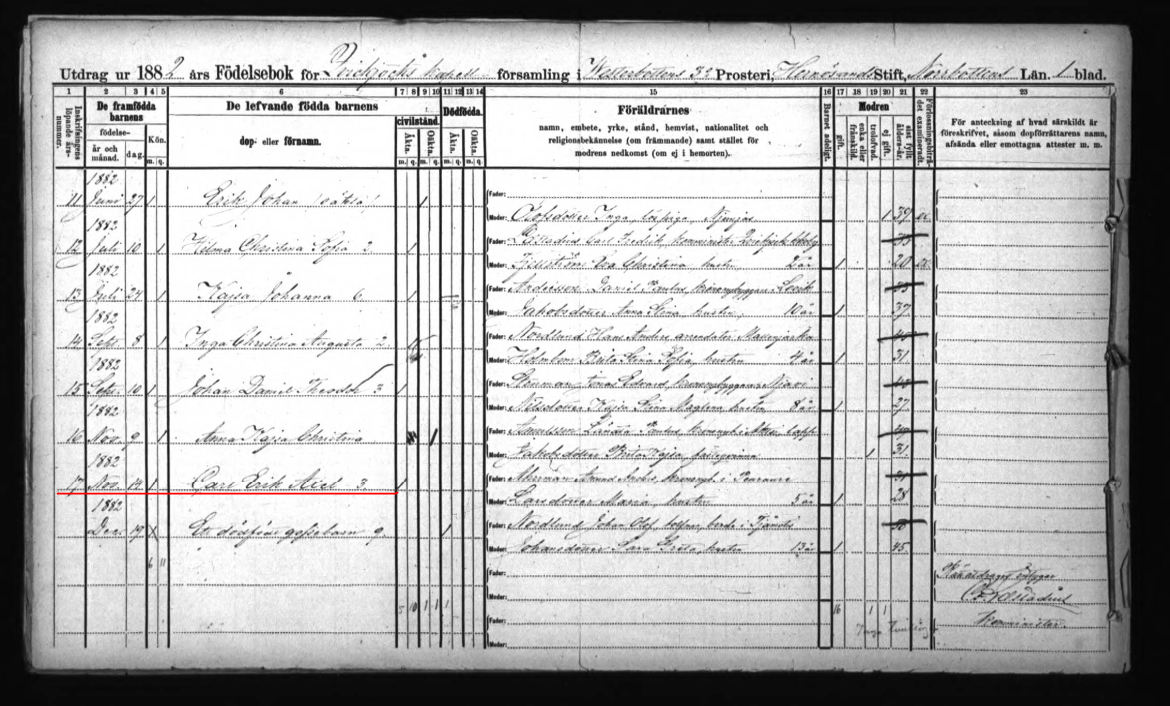

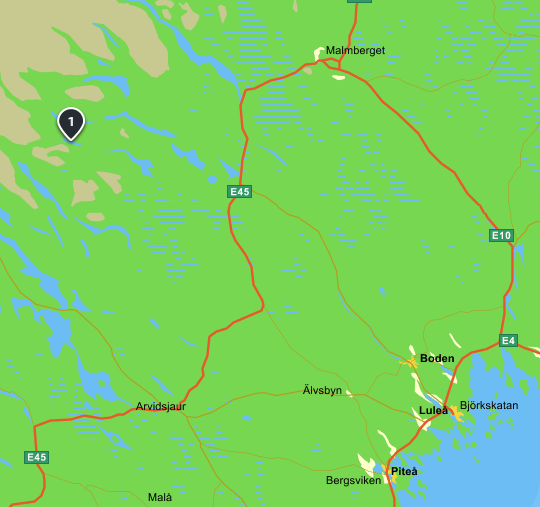
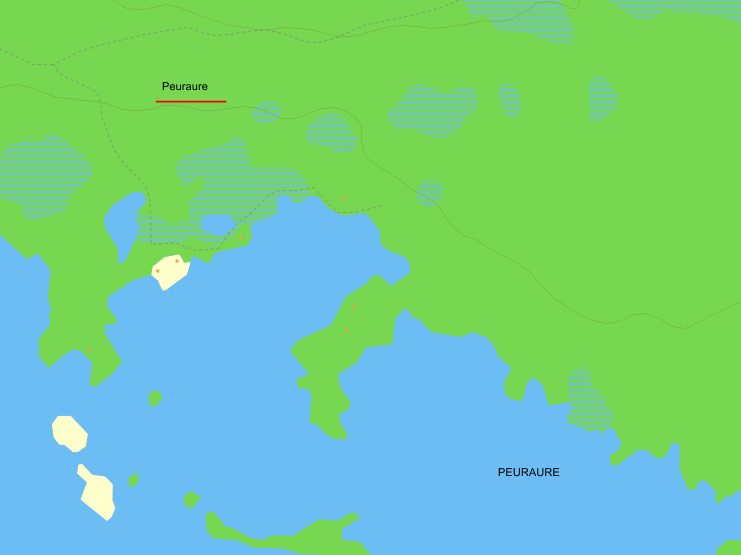

There is no information about when he left for the states, but he was registered for the Canadian Army in February 1916 from Vancouver, Canada. Attached to the 102nd battalion, 11th Canadian Infantry Brigade, 4th canadian Division, he left Halifax June 18th, 1916 and arrived England 10 days later.
The casaulty card states that Eric became injured by a Gun Shot Wound October 23rd, 1916, in the right thigh, but are back at the base from hospital in October 29th, 1916. From the base he joined his unit again November 12th, 1916.
He fights in the battle of Vimy Ridge, and is reported to have been Killed in Action April 9th, 1917, age 34.
Some notes from the diary of the 102nd Canadian Infantry battalion, April 9th, 1917:
Easter Monday April 9th 2.00 AM to 2.30 AM
Reports here persistent that at least one of our 18 pounders was firing short. The news was first brought in by company runners and later confirmed by the battalion Scout officer.
2.45 AM
… Brigade was immediately notified by wire. Similar reports continued to come in and the Artillery liaison officer was sent for. On arrival he wired the batteries and within 30 min the error was corrected. News was brought in that the Lt Frame? had been wounded by our own artillery fire before the L.O (Liasion Officer) order had had time to have effect. [3.36 AM] Lt Wright(?) was immediately sent for in his place …
5.30 AM ZERO HOUR. Barrage Opened. Within 5 minutes eyewitnesses from Ops in CAVALIER reported that our men went over as one man and their formation was perfect.
5.45 AM
… Runners reported Lt H.G Dimsdale(?) a/o.c D Coy was wounded in hand and leg. Very shortly afterwards called in at Hdqrs on his way to the Dressing station, he reported the waves had passed through the wire without difficulty, and hade gained the enemy front trench …
10.15 AM
… Battn. Runners confirmed all previous reports regarding sniping and brought the information that the 54th were falling back on the right. The Brigade [fore …?] promised relief from the 95th (?). The balance of the day passed uneventfully in comparison; News became more satisfactorily and Lt Coilson (?) was found alive in a shell-hole; his leg was badly broken but at time it seemed probable that he would recover, a hope which, alas, proved ill founded. This gallant young officer died of his wound very shortly after and was buried in the cemetery at Villers-au-bois. Lt E.d.B Fallhi (?) was also killed on this day, as was Lt D.A Boyes.
Maj R.G.H Brydon was still on the missing list. Of all the officers who were up to the front on the Easter Monday, the Act CO and the Lewis gun officer were the only to return Scathless.
6.30 PM
Without a barrage the 85th Bn went over and the huns retreated. Hill 145 was taken and a large extent sniping ceased.
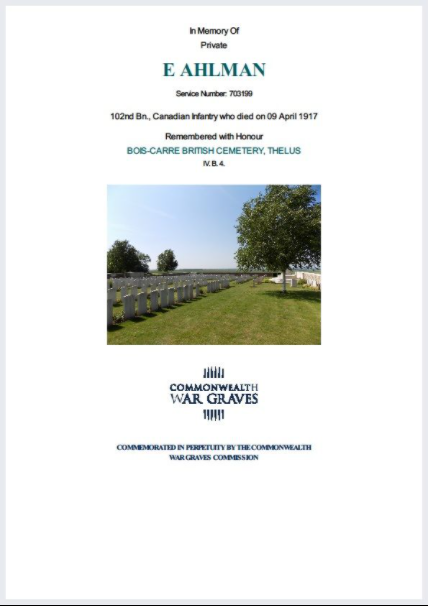
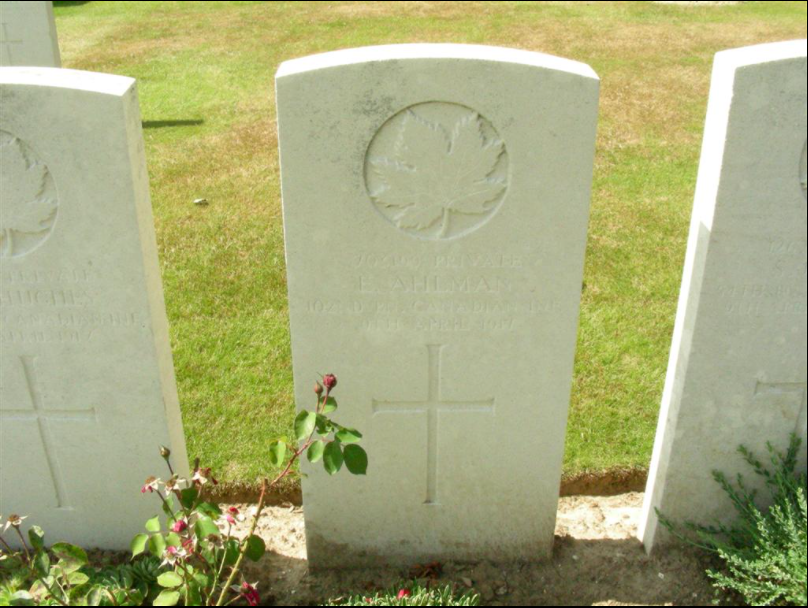

Eric is buried in Bois-Carre British Cemetery, east of Vimy Ridge.
The third Swede giving his life for the 4th Division this day in April is Malcolm Carlson, born in Sweden as Melker Emanuel Karlsson. He is born December 8th, 1890 in Grums Perish, Värmland county. He is raised by his parents Lovisa Olsson and Emanuel Karlsson. According to the church books Malcolms father Emanuel went over to North America in March 23rd, 1910, the family probably followed him then, or emigrated a bit later.
During this time Malcolm was about to make his conscript period i Sweden and he probably remained in Sweden in the beginning. He made his conscript but the church books states that he “ran away”, “ecaped” to N America together with some other young men in his age. He is belived to get together with his family in Winnipeg, Manitoba, Canada.
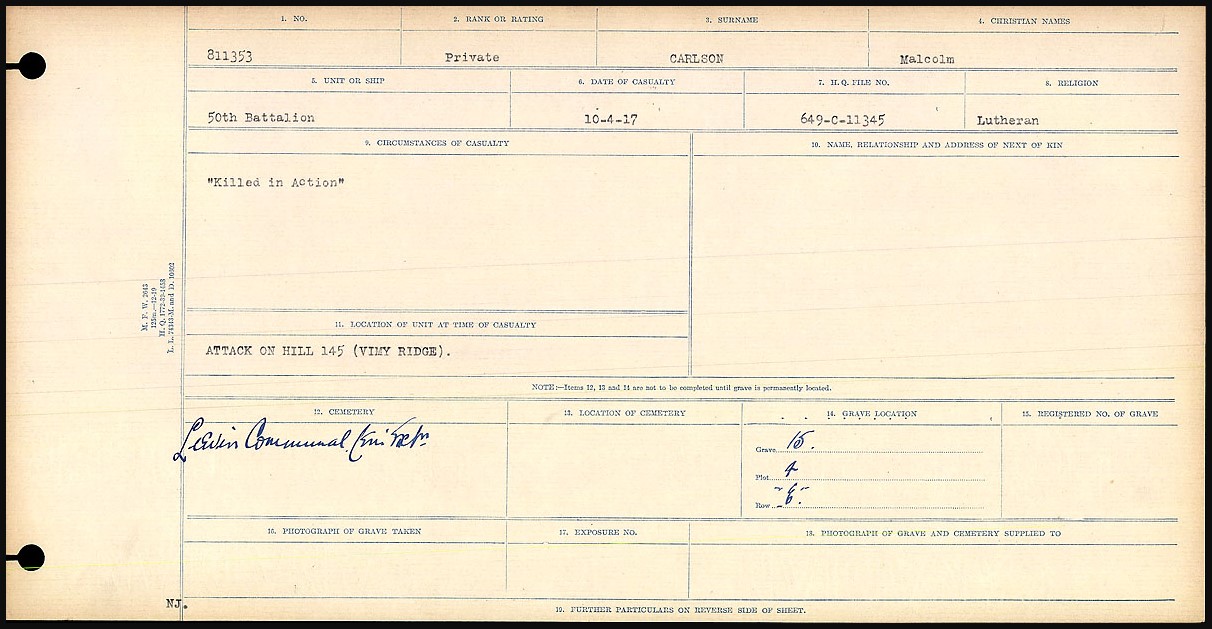

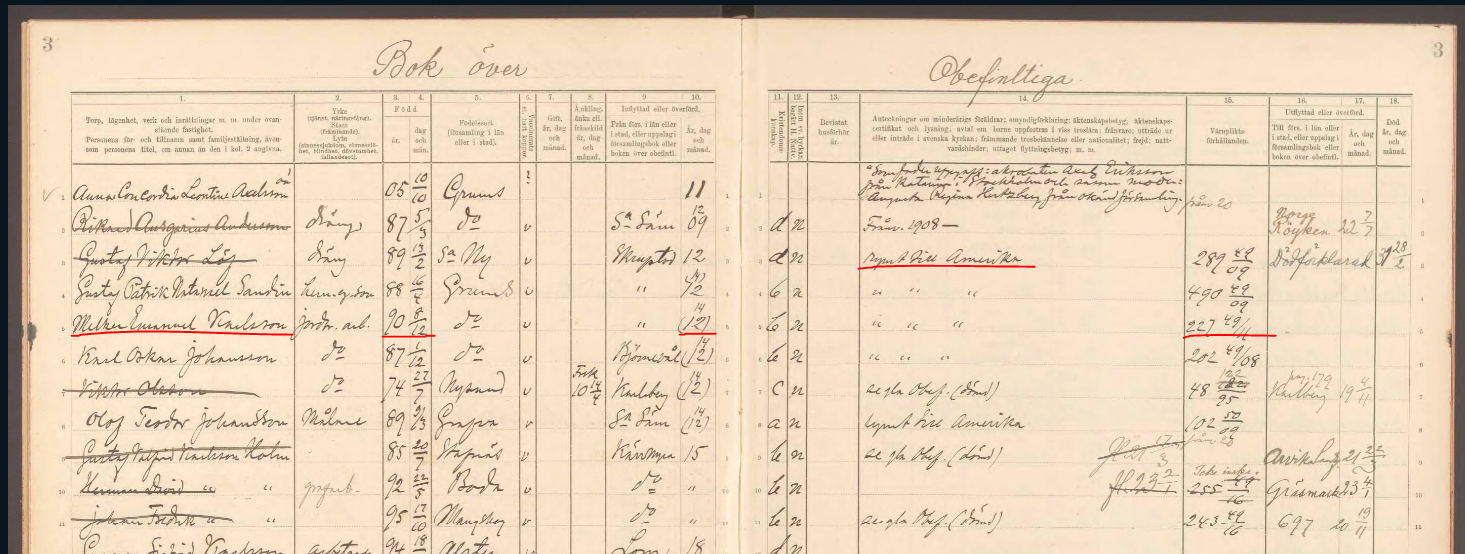
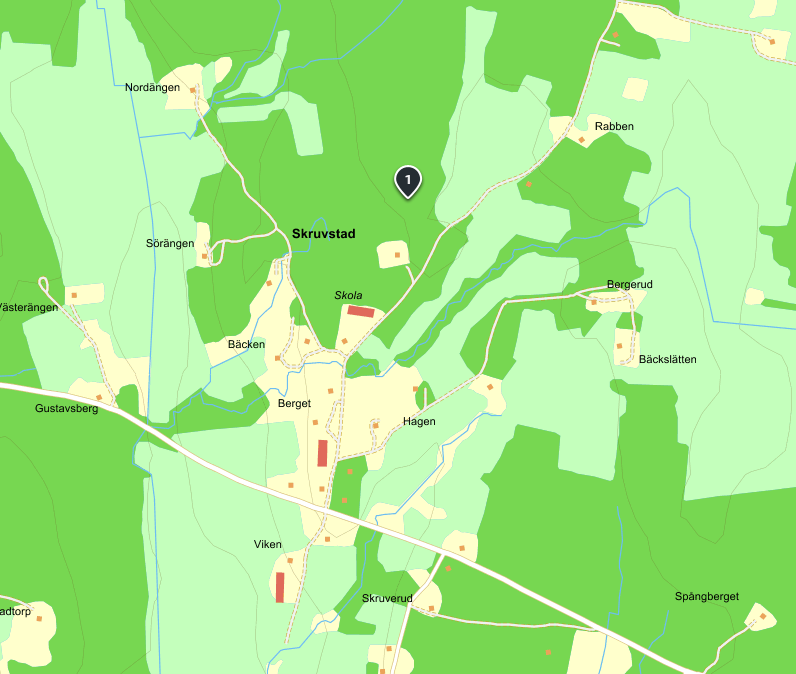
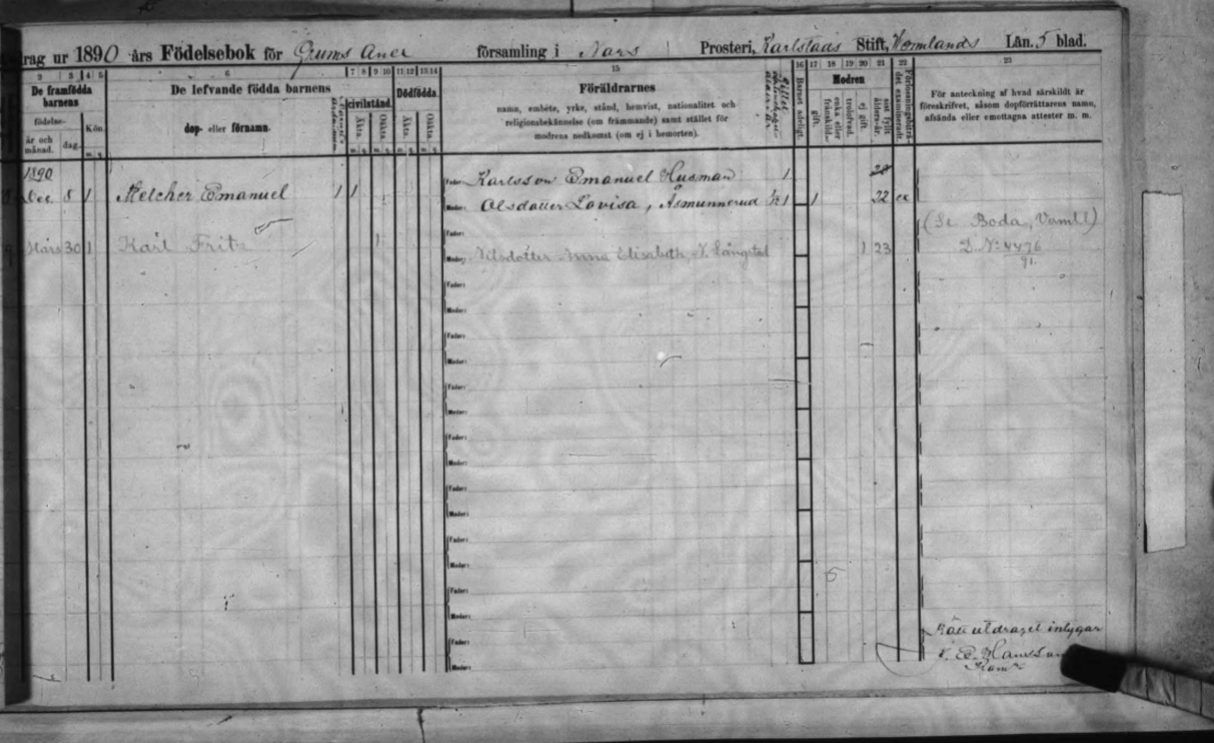

He is registered to the Canadian Army in December 1915. Malcolm leaves Halifax with his unit in August 1916, and arrives in Liverpool after a 9 day trip over the Atlantic Ocean. I wonder how it felt to go over to Europe again after has been emigrated from Sweden a few years earlier?
Malcolm is tranferred from 138th battalion to 175th battalion in October 26th, 1916. He is then transferred to 21st reserve battalion in Seaford, UK, and later tranferred to the unit he fought with in the battle of Vimy Ridge, the 50th Canadian Infantry Battalion, 10th Canadian Infantry Brigade, 4th Canadian Division.
He arrived in Havre, France in February 2nd, 1917, and joined his unit in the field 7 days later. Malcolm survived the first day of the battle as his unit was fighting in the area of PIMPLE operation, the most northern part of the front, but he is reported to have been Killed in Action during April 10th, 1917, age 26.
Below some statements from the diary of the 50th Canadian Infantry battalion:
Report on attack on Hill 145 by 44th and 50th Canadian Infantry, April 10th 1917.
In accordance with 10th Canadian Infantry Brigade Operation order No 63, the 44th battalion moved into accommodation in the SOUCHEZ TUNNEL, movement completed by 3 AM April 9th.
At 6.00 PM on the 9th orders were received cancelling the attack on the PIMPLE area. The battalion moved over and took up position in the MUSIC HALL Line behind the battalion of the 11th Infantry brigade, whose attack had been held up in the neighbourhood of HILL 145.
At 11 AM April 10th I received orders to capture and consolidate as an outpost line, the eastern edge of VIMY RIDGE lying beyond HILL 145; the battalion frontage to extend from left of 42nd battalion to junction of BESSY and BANFF trenches.
The battalion moved out from MUSIC HALL, deploying into Artillery formation, crossing ZOUAVE VALLEY, and moving to the assembly positions in BEER and BEGGAR trenches …
When barrage lifted attacking parties moved forward in good order. Touch beeing maintained with 50th battalion on left throughout. At 3.21 D Coy reached the Western Edge of BOIS DE LA POLIE(?), C Coy entering BANFF trench at the [ … ] time and working down BLIGGHTY trench …
There is no info on which time or in which are Malcolm was killed, but it was probably in the area of his battalion on the northern part of the ridge.

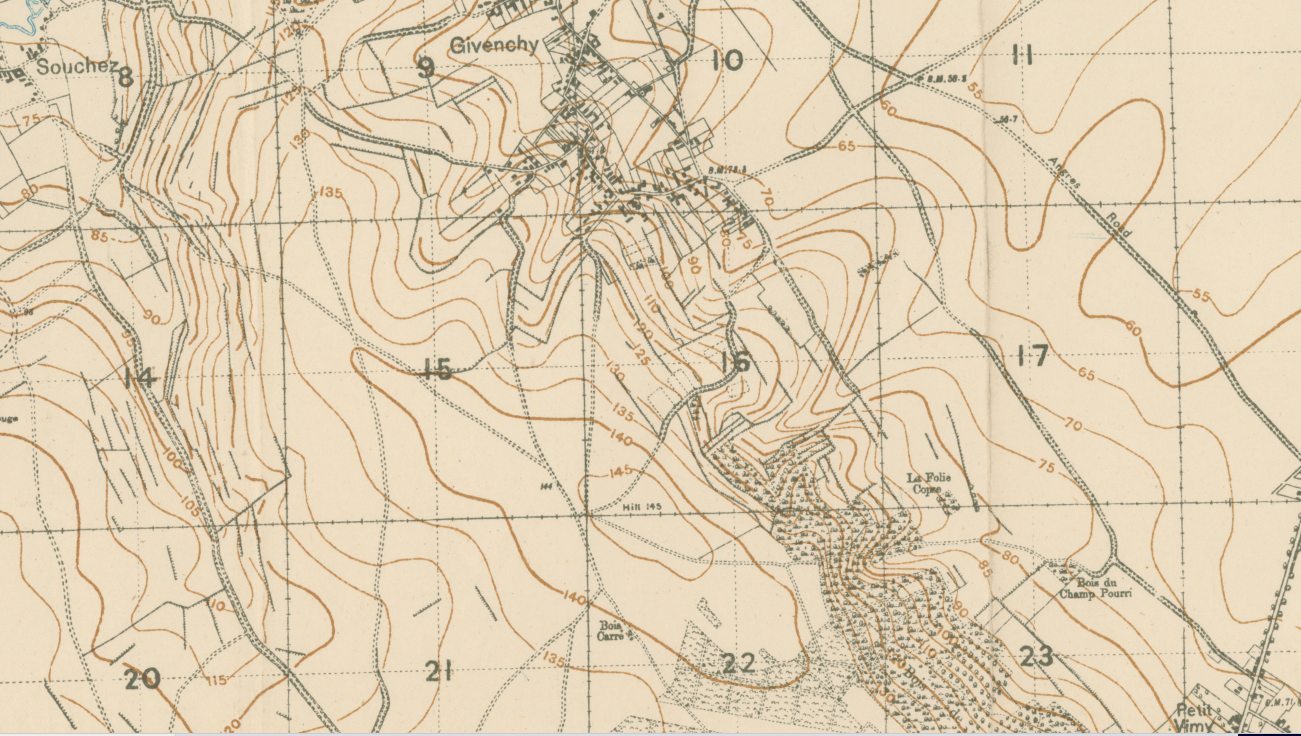

Malcolm is buried in the Lievin Communal Cemetery Extension in France.
The last of those four Swedes I am commemorating in this article is the third who gave his life at the start of the defensive, April 9th, 1917. The other three were fighting with the fourth Canadian Division in the northern part of the ridge, but Axel Renyus Carlson was fighting with his unit in the southern part, together with the 5th Canadian Infantry battalion.
Axel Renyus Carlson was born in Sweden as Axel William Renius Karlsson, on March 23rd, 1890 in Elghult perish, Hageskruv farm, Kronoberg county, in Småland, Sweden. It is quite interesting to read the notes in the church book, and it is easy to form a story without having any more facts.
Axel was only about 3 years old when the family´s maid took him and “escaped” to North America. The father in the household had “escaped” as well to North America, in 1892. The maid had also another son where the father is “unknown”, and maybe Axel´s father was the father to that child as well? We will never know.
All four above mentioned individuals are transferred to the church book of “not present” in 1895. There are at the moment no other facts about where they settled down, but in some papers is Holmfield, Manitoba, Canada, mentioned.
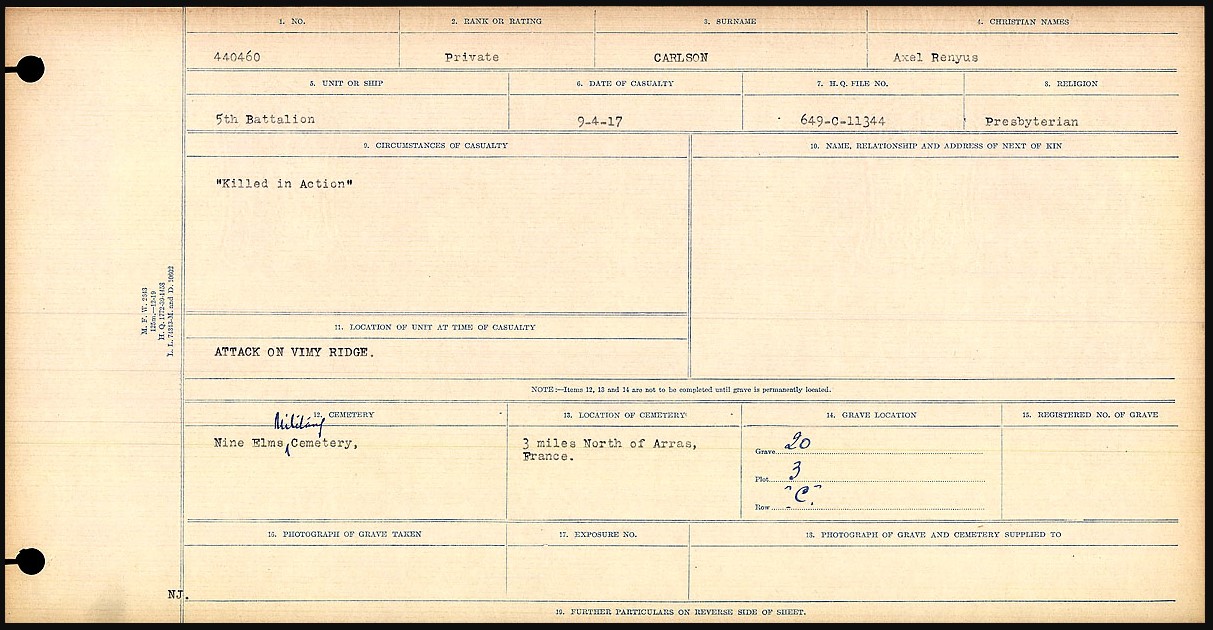
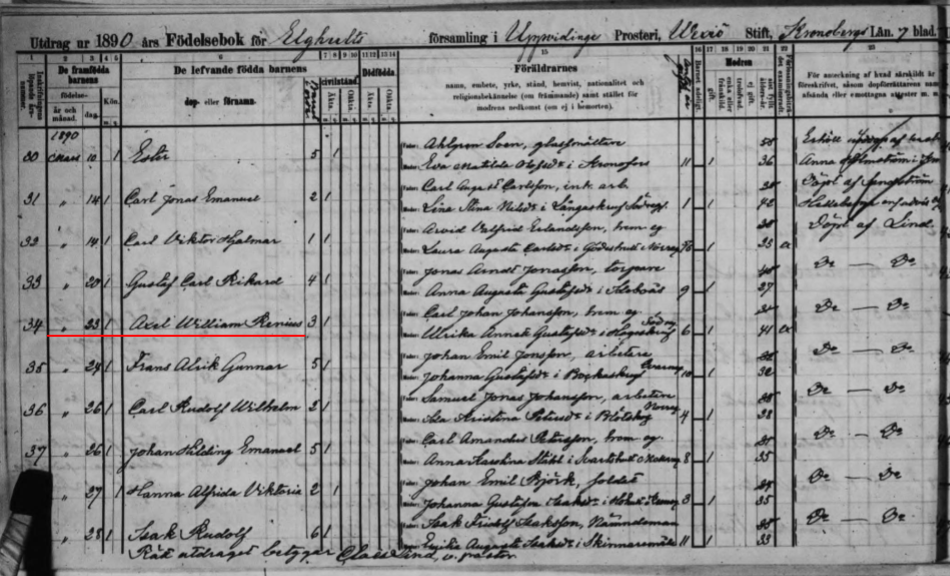




Axel is registered to Canadian Army in February 1915. There is no information that I have found so far that mention when he left Halifax for England, but in September 14th, 1915 he is transferred 32nd reserve battalion. In November 24th, 1915 he is drafted to 5th canadian Infantry battalion, 2nd Infantry Brigade, 1st Canadian Division. He is Taken on Strength in Havre, France in November 25th, 1915.
He was early at the battlefield at the Western Front, already in 1915, and became wounded in August 7th, 1916. It is also mentioned in the casualty cards that he stayed in hospital for a while with some infection of the Lymph Glands, that made hime stay around 30 days in total in hospital in Camiers and Etaples, France. He did some temporary duty for the 182nd Tunneling Coy in November 1916.
As we now know he was killed in action the April 9th, 1917, age 27, in the fightings for Vimy Ridge, Hill 145.
Below you find some statements from the diary of the 5th Canadian Infantry battalion, April 9th, 1917.
…Battn H.Q. at A.22.a.9.2. All Battalion in assembly positions by 1.00 a.m. 6 casualties from one 5.9 shell (1 killed, 5 wounded (1 seriously).
8th C.I. Battn occupied tunnels and dug-outs vacated by our people.
Zero hour set for 5.30 a.m.
Our Trench Strength as follows:-
Battn. H.Q. 5 Officers.
4 Coys. 4 Officers each.
Total other ranks – 803.
at 5.30 a.m. precisely barrage opened, and our men advanced.
Black Line. (first objective) gained at 6.10 a.m. – Casualties estimated at 200 – a great many of which were caused by machine gun fire. Lieut. Hocking had his stretcher party at work immediately, and really good work was done in getting the wounded to our Regtl. Aid Post. As there were too few bearers for clearing to the Field Ambulance, he used forty prisoners for this work. Sgt. Chivers-Wilson and his dressers followed the attacking ?? closely and did noble work in dressing the wounded. About 9.00 a.m. a report was received by runner from Major Mahaffy saying that he had reached the Red Line and was sending back 70 prisoners. At 6.30 p.m. the 8th C.I. Battn relieved us in the Red Line and we occupied part of the Black Line, with Battn H.Q. at A.17.e5.2.
Casualties – estimated at 14 Officers and 350 O.Rs.
The Dressing Station was located in Bastion Tunnel. About 100 men were also accommodated there. Capt. Day went to Hospital, Lieut. Lawson given charge of “D” Coy. Lieut. Moxley now reported killed …
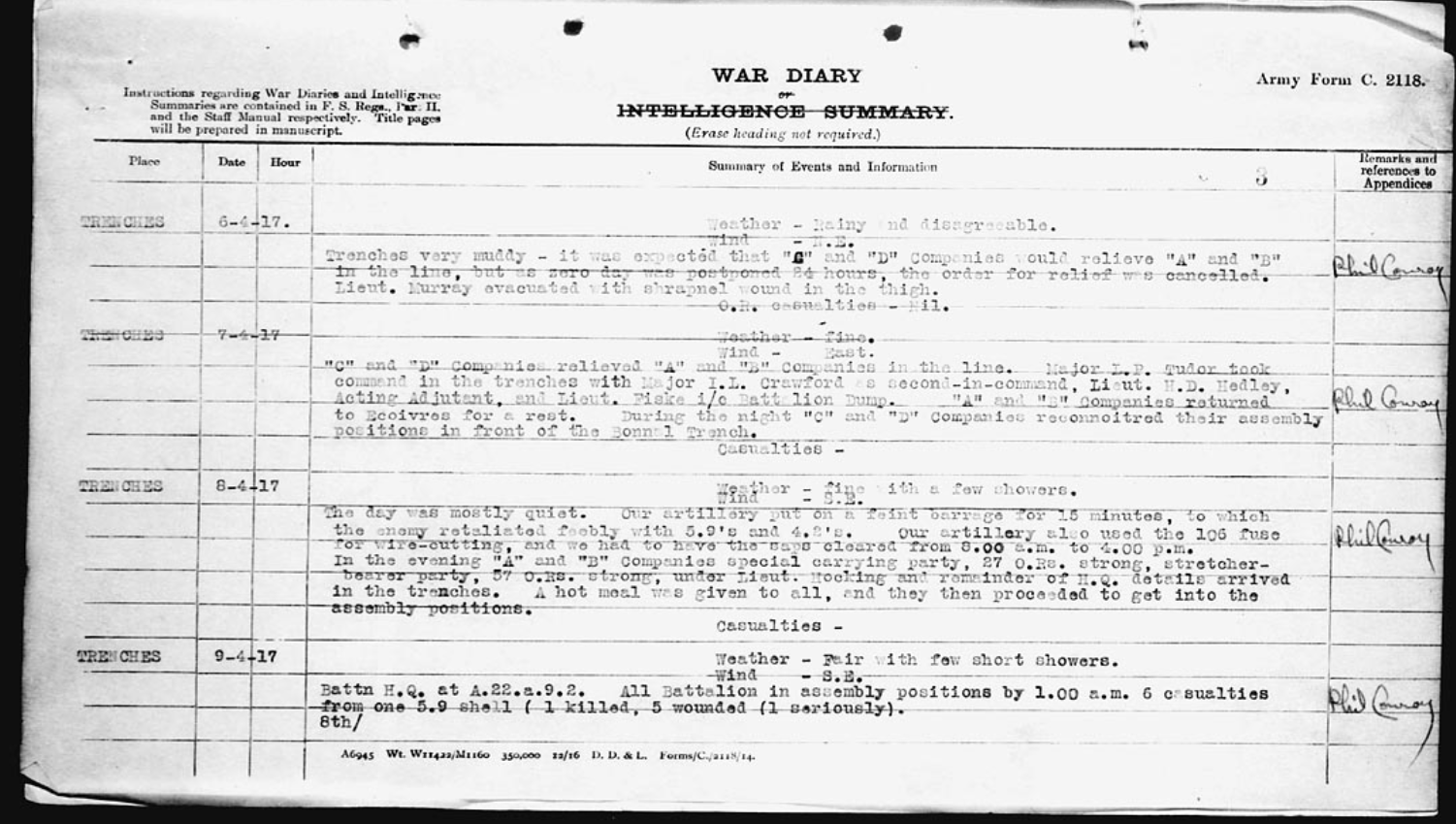


In the screen shots from some digital maps below, you can find some information about the locations of the Canadian battalions during the start of the battle of Vimy Ridge.
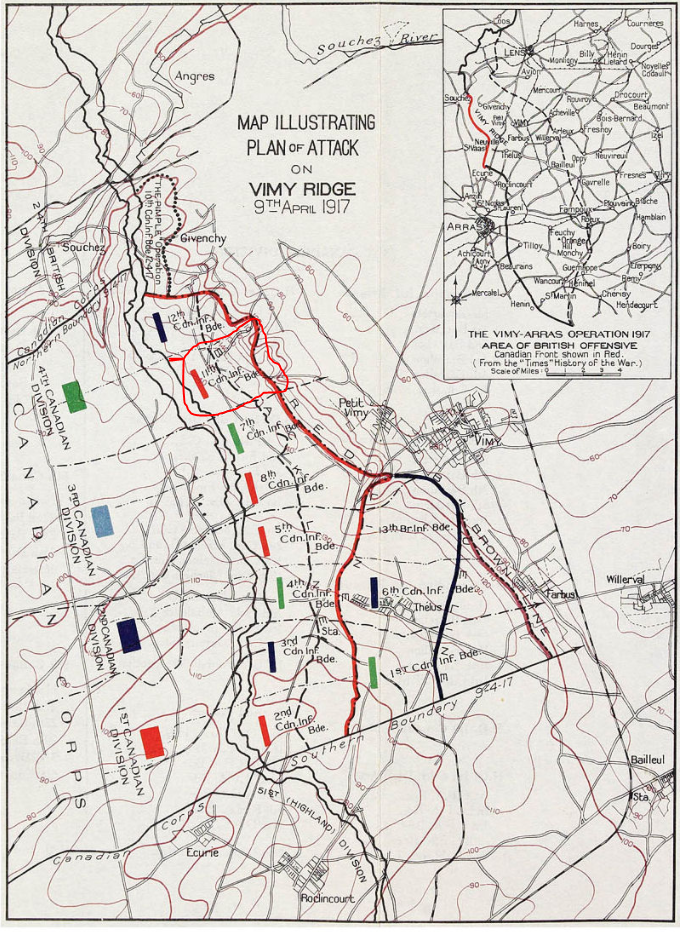
Three of the Swedes fighting for the 4th Canadian Division, 10th, 11th and 12th Infantry Brigade in the Northern part, and one Swede fighting for the 1st Canadian Division, 2nd Canadian Infantry Brigade, the days of April 9th and 10th, 1917.



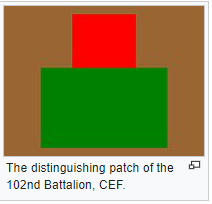
On this day, April 9th, 2021 it is 104 years since these Swedes gave their lives in the battle of Vimy Ridge, a battle within The battle of Arras, for their new country Canada. More Swedes were participating, and was killed in action later on in the following days, but that will be another story. We will remember them.
